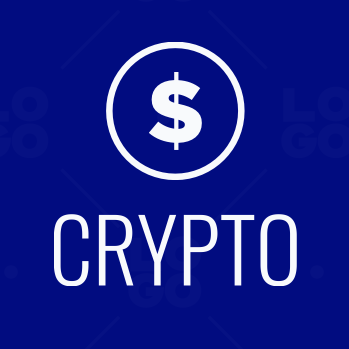Key Takeaways
- A rug pull is a crypto exit scam, where developers drain liquidity or abandon a project, leaving investors with worthless tokens.
- In 2025–2026, smarter scams use advanced coding or fake audits, making investor vigilance and transparency checks essential.
- Prevention is the best defense — verify audits, lock status, and team credibility before investing in any new DeFi or NFT project.
What Is a Rug Pull? How to Spot and Avoid Crypto Scams in 2025–2026
In the ever-evolving crypto world of 2025, the question “What is a rug pull?” remains crucial for investors navigating decentralized finance (DeFi) and emerging blockchain projects. While innovation continues to redefine how money moves globally, the darker side of this freedom — fraudulent projects and exit scams — still threatens investor trust.
Rug pulls are among the most damaging forms of deception in crypto, often wiping out millions of dollars overnight. As DeFi expands in 2025 and 2026, understanding how these scams work — and how to avoid them — has become an essential skill for anyone participating in the digital asset economy.
Understanding What a Rug Pull Is
A rug pull occurs when developers suddenly withdraw liquidity or abandon a project after investors have poured funds into it — effectively “pulling the rug” out from under their feet. This leaves the project’s token worthless and the investors with heavy losses.
In simple terms, a rug pull is a type of exit scam common in decentralized finance (DeFi) and meme coin projects. Because blockchain technology allows for permissionless creation of tokens and liquidity pools, bad actors can easily deploy fake projects that appear legitimate — until the moment they disappear.
Rug pulls can occur in decentralized exchanges (DEXs), NFT collections, or yield farming platforms. By the time the rug is pulled, it’s often too late to recover funds because of DeFi’s irreversible transaction nature.
Also read: How to Use a Crypto Debit Card
The Anatomy of a Rug Pull
Rug pulls typically follow a predictable pattern, though their methods have become more sophisticated in 2025. Understanding their mechanics helps investors identify red flags before it’s too late.
1. The Hype Phase
Developers launch a new project — often promising massive returns, innovative technology, or community-driven governance. Eye-catching websites, celebrity endorsements, and aggressive marketing campaigns on social media build credibility.
The goal is to attract liquidity quickly. Early investors are promised huge rewards through yield farming, staking, or token airdrops.
2. The Liquidity Trap
Once enough liquidity is added to a decentralized exchange (e.g., Uniswap, PancakeSwap), investors begin trading the token. However, the project’s smart contract or liquidity pool often includes centralized control, allowing developers to withdraw all funds or disable trading.
3. The Exit
Developers suddenly remove the liquidity or dump their massive token holdings, crashing the price to near zero. The project’s website and social media vanish shortly after, leaving investors with valueless tokens and no recourse.
This process can happen within hours or unfold over months, with 2025 rug pulls increasingly mimicking legitimate long-term projects to appear trustworthy.
Types of Rug Pulls Seen in 2025–2026
While the core concept remains the same, rug pulls have diversified as DeFi and crypto ecosystems evolve.
1. Liquidity Rug Pulls
The most common form. Developers withdraw liquidity from DEX pools after attracting investors, leaving holders unable to sell their tokens.
2. Technical or Smart Contract Exploits
Developers insert backdoors in smart contracts, allowing them to mint unlimited tokens or drain liquidity stealthily.
3. Front-End Rug Pulls
Some scams manipulate a project’s website or app interface to mislead investors — for instance, displaying fake balances or redirecting wallets to phishing sites.
4. NFT Rug Pulls
NFT projects promise future utilities, metaverse access, or game integrations, then vanish after minting and cashing out — a trend that surged in 2025’s speculative NFT revival.
How to Identify and Avoid Rug Pulls in 2025–2026
With DeFi becoming more regulated and transparent, many projects now undergo smart contract audits, but rug pulls still occur. Investors can protect themselves by following a few crucial steps.
1. Verify Smart Contract Audits
Only invest in projects that have undergone third-party audits from reputable firms like CertiK, PeckShield, or Hacken. Check that the audit is verifiable — not just mentioned on the website.
2. Check Liquidity Lock and Ownership
Legitimate projects lock their liquidity in smart contracts for months or years, preventing developers from withdrawing funds. Tools like DexTools or Token Sniffer can show if liquidity is locked and whether the contract is renounced (meaning the developer can’t change it).
3. Analyze Token Distribution
If one or two wallets hold the majority of tokens, that’s a major red flag. Such holders can crash the market by selling all at once.
4. Research the Team
Anonymous teams aren’t inherently bad, but transparency helps build trust. Check if developers have verifiable experience, LinkedIn profiles, or connections to previous successful projects.
5. Beware of Unrealistic Promises
High guaranteed returns, instant profits, or “risk-free” claims should raise suspicion. DeFi can offer high yields, but legitimate projects emphasize risk disclosure, not hype.
6. Monitor Community Behavior
Scam projects often censor critical questions on Telegram, Discord, or X (Twitter). A genuine project encourages open discussion and skepticism.
Rug Pulls in a Regulated Era
In 2025 and 2026, global regulators are taking a tougher stance on crypto fraud. Countries like the U.S., Singapore, and the EU are implementing DeFi accountability frameworks, requiring better transparency and on-chain auditing.
Additionally, AI-driven scam detection tools and blockchain forensics are helping track fraudulent projects faster than before. Platforms like Chainalysis and Elliptic collaborate with regulators to trace stolen funds, resulting in several high-profile arrests in 2025.
Still, prevention remains the best protection. The decentralized nature of crypto means that while regulators can deter bad actors, ultimate responsibility lies with investors themselves.
Why Rug Pulls Persist — and What’s Changing
Despite rising awareness, rug pulls persist because greed and FOMO (fear of missing out) remain powerful motivators. Many investors overlook due diligence in pursuit of the next big token or meme coin.
However, 2025 marks a shift in investor education. Social media influencers, DeFi analytics platforms, and blockchain educators are focusing on transparency and verification rather than hype. Communities are now quicker to flag suspicious activity, and reputable projects are differentiating themselves with clear governance, audits, and open-source code.
The result? While rug pulls still occur, they are increasingly easy to identify — provided investors take time to research.
Conclusion: Awareness Is the Best Defense
So, what is a rug pull? It’s more than just a crypto scam — it’s a hard lesson in the importance of due diligence in decentralized markets. In the fast-moving crypto landscape of 2025–2026, the line between innovation and exploitation can be razor-thin.
But awareness, education, and responsible investing can bridge that gap. As DeFi matures, so too must investor behavior. Recognizing warning signs, using reliable tools, and demanding transparency are not just smart strategies — they’re essential defenses in an increasingly complex digital economy.



